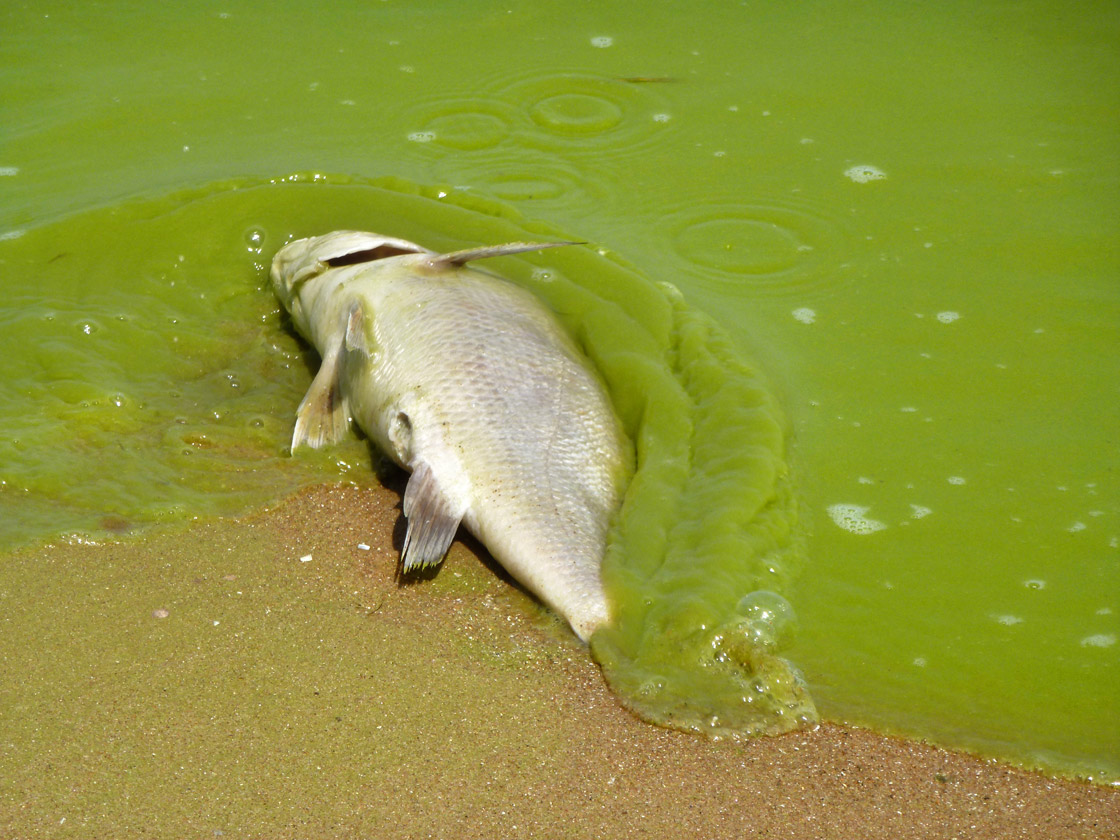TORONTO – It’s that time of year when Canadian homeowners kick the dust off their lawn mower and wait anxiously for their lush green lawns to revive.

But current land use and agricultural practices – including the North American obsession with groomed, green lawns – is putting the Great Lakes at risk, according to experts.
Despite Canadian and U.S. governments having enacted numerous laws and restrictions since the 1970s to reduce the amount of phosphorus entering the lakes, Lake Erie has seen a resurgence in algae blooms caused by contaminated runoff, according to a paper published Monday.
Researchers claim that beginning in the 1990s there has been a systematic increase in algae blooms and oxygen depletion.
Photo caption: A satellite image of Lake Erie on Sept. 3, 2011, overlaid on a map of the lake and its tributaries. This image shows the bloom about six weeks after its initiation in the lake’s western basin. On this date, it covers the entire western basin and is beginning to expand into the central basin.
“Algal bloom used to be quite common in Lake Erie before the 1970s when the U.S. and Canadian governments invested billions of dollars in sewage treatment plants and other approaches to reduce phosphates,” said Josef Daniel Ackerman, professor of Physical Ecology & Aquatic Science at the University of Guelph.
“These approaches worked quite well because most of the phosphates were coming from sewage and sources could be identified literally to pipes that could be controlled.”
The majority of phosphorus that now ends up in the Great Lakes is from diffuse sources, such as surface runoff from our streets, lawns and farmland.
“Diffuse sources of pollution are harder to control because they involve the actions of so many people and would require either government regulation, change in cultural practices or both,” said Ackerman.
Changing cultural practices
The key issue for preventing harmful algae blooms is to reduce the amount of phosphorus entering the lakes. “These fertilizers are generated by human activities such as farming and even lawn care,” said Ackerman.
There is a general belief that the damage caused by a single home is minimal. However the U.S. Environmental Protection Agency (EPA) has named nonpoint source (NPS) pollution, such as contaminated water runoff, as the country’s leading source of water quality degradation.
“Although individual homes might contribute only minor amounts of NPS pollution, the combined effect of an entire neighborhood can be serious,” stated the EPA.
Residential pollution is only one factor contributing to phosphorus entering threatened water systems. Widespread adoption of agricultural practices such as no-till farming and other land uses also contribute.
However, as more farmland is converted for residential use, the impact of residential practices will continue to grow.
Over the past 10 years 11 U.S. states have banned the use or sale of lawn fertilizers containing phosphorus.
In 2007, Manitoba became the first province to introduce a similar ban. In 2011, Sudbury became the first community in Ontario to pass a ban on phosphorus fertilizers. The ban came into effect in 2012.
Other strategies for reducing contaminated runoff at the household level include:
- choose garden plants that don’t require a lot of water and fertilizer
- minimize the amount of high-maintenance grass on your property
- use non-toxic cleaning products around the house
- never pour unwanted chemicals down the drain or on the ground
- preserve existing plants and trees to prevent erosion



Comments